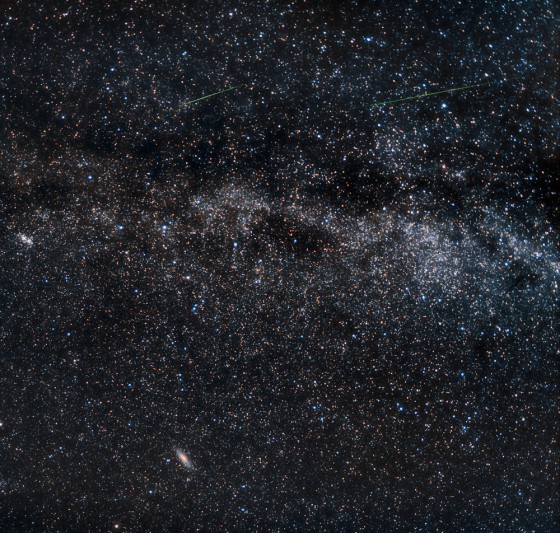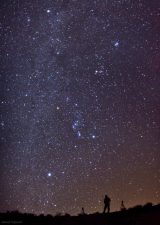Sky gazers traveled to Mitspeh Ramon, a town on the edge of the Ramon Crater in the Negev desert this weekend. Others followed onthegotours.com to Jordan’s Mt Nebo, Madaba and Wadi Rum. Still others traveled with adventurecompany.co.uk to the Sinai desert in Egypt. These isolated places all have a resource that Tel Aviv and other great Middle Eastern cities lost long ago. The skies here are relatively free of clouds and air pollution and they are very dark. Dark enough to see the wispy remnants of a dying comet. The Perseid meteor shower appears reliably every year as the earth passes through the debris of Comet Swift-Tuttle in August. It comes at a convenient time for those in the northern hemisphere who are enjoying the great outdoors and spending warm evenings outdoors, around campfires. This year’s peak came during the weekend of August 11 to 12 when the crescent moon rose too late to wash out the display.
You don’t need a telescope or even binoculars to see the Perseids and this year’s show isn’t over yet. The stream lasts until the last week in August or until the next full moon washes out all but the brightest meteors. All you need is a clear dark sky.
Sometimes it is helpful to have a comfortable chair or blanket to lie on so you can look up for hours. Some of the astronomy guides say to wait until after midnight (I will say that waiting at least an hour after dark will minimize the number of mosquitoes you’ll encounter.)
They say to look near the constellation Perseus in the northeastern sky. But since a meteor can appear anywhere in the sky, just pick a spot where you’ll be comfortable and where the sky looks dark (e.g. if a city or the neighbors to your north shines lights into your eyes, look south.) I looked straight up while lying inside an canoe until the clouds came.
Dark starry skies are increasingly rare around the world and yet, to see stars, planets, meteors and comets as they were meant to be seen it isn’t necessary to travel to outer space. It is only necessary to find a place away from city lights and pollution and look up.
Image of meteor shower from Shutterstock


